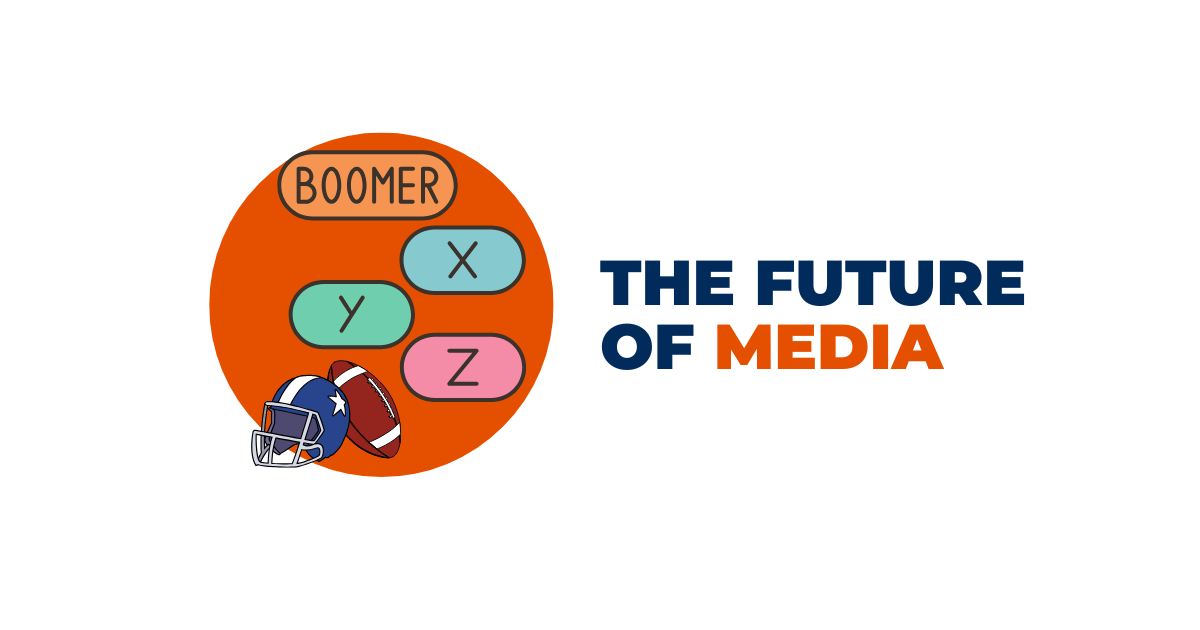- Beyond The Brief
- Posts
- The Future of Media
The Future of Media
Super Bowl ads cost $8M, but digital ads cost 3.6x less per impression.

TV is evolving, digital is dominating, and attention is the most valuable currency in advertising. But here’s the problem—attention is harder to earn than ever.
In 2000, the average human attention span was 12 seconds. Today? 8 seconds—shorter than a goldfish’s. We’ve become a generation of tab-hopping, doom-scrolling, content-skimming machines. (1)
But here’s the paradox:
Netflix users average 2 hours of daily streaming, and household viewership is growing. (Netflix Q3 2024 Report)
TikTok users spend nearly 56 minutes a day on the app, with average sessions lasting 11 minutes. (Mixbloom, 2022)
Reddit users now spend 31 minutes per day scrolling deep-dive threads. (eMarketer, 2024)
Attention isn’t dying—it’s evolving. The question isn’t how long people watch—it’s how deeply they engage.
Some platforms are stealing attention. Others are bleeding it. The real question: where should advertisers place their bets?
TV Advertising: Still Worth It?
This year, a 30-second Super Bowl ad cost $8 million—a full million more than last year. That’s not an ad buy. That’s a bet.
A bet that 127.7 million people—the largest TV audience in U.S. history—aren’t just watching the game, but watching the ads. (Source: Statista, 2025)
Let’s do the math.
Super Bowl ads reach 127.7 million people. That’s $0.06 per viewer.
Compare that to digital.
The average U.S. digital ad CPM is $17—or $0.017 per viewer. (My own data from managing accounts.)
Digital is 3.6x cheaper per impression, but here’s the kicker—Super Bowl ads aren’t about efficiency. They’re about cultural dominance.
Gary Vee says the Super Bowl is underpriced attention—and he’s right. For one night a year, ads aren’t an interruption. They’re the main event.
People aren’t mindlessly scrolling past them like on Instagram or TikTok. They’re watching. Engaging. Talking.
That kind of attention is rare. And powerful.
I watched every Super Bowl ad this year. My top picks?
The Google Pixel ad taps into a universal truth—the hardest job in the world is being a parent. And like any job, you develop skills along the way.
Google brings this insight to life with an AI-powered job interview on the new Pixel phone, where Gemini validates a parent's expertise. A human story, seamlessly tied to product functionality. Smart. Emotional. Effective.
Pfizer’s ad? Simple, but powerful. When cancer patients ring the bell, it signals victory over the disease. Pfizer takes this low-hanging but deeply symbolic insight and reframes patients as boxers winning a fight. A perfect way to show progress in the fight against cancer.
And then there’s Jeep. They got Harrison Ford to deliver the ultimate closing line:
"This Jeep makes me happy, even though my name is Ford."
But beyond the punchline, it’s a manifesto ad—about ownership, responsibility, and shaping the future. Full of American pride, but not in an overdone way. Strong storytelling, and a memorable sign-off.
TV is Dying. Slowly.
The median age of a primetime network TV viewer? 64.6 years old.
For cable, it’s not much better. Bravo skews younger—at 56. The Big Three news channels? Average age: 69.

SOURCE: NIELSEN, 2023-24 SEASON THROUGH MAY 19.
Here’s the truth: TV isn’t dying overnight. It’s aging out.
If you’re buying TV spots, you’re not reaching the next generation of consumers. You’re reaching an audience that still watches the 6 o’clock news and remembers life before the internet.
Meanwhile, Gen Z? They spend 5+ hours a day on TikTok, YouTube, and Twitch.
The brands still spending billions on TV need to ask themselves: Are we buying reach? Or are we just paying for nostalgia?
What You Should Remember
Attention isn’t dying—it’s shifting. Depth matters more than duration.
Super Bowl ads = cultural bets. Win the moment or burn $8M.
Digital is cheaper, faster, and smarter. But branding still matters.
TV isn’t dead—it’s just old. Average viewer? 64.6 years.
Smart brands don’t pick sides. They follow attention, not tradition.
You can’t just buy attention—you have to earn it.
If this made you think, send it to a friend who needs to hear it. The more we challenge the status quo, the better we get.
See you next time—same place, sharper insights!
Best,
Marti
Reply